Editor’s Note: For our new series Being Queer in… we’ve hand-selected some incredible people to tell their stories and give us candid accounts of the queer experience in the creative industries. Being Queer in… is inspiring, raw, and dripping with authenticity.
For our first article, we spotlight the queer experience in Motion Design. To help us, we’ve enlisted Ed Kevill-Davies, Senior Motion Graphics Artist at Coffee and TV. Ed shares his journey giving us a window into the life of a gay man navigating his way through the industry.
You can file this one under “essential reading.”
I came out as gay in the mid-noughties at the age of 22. It’s funny, within my queer friendship group, we joke that at some point or another, whether on a date, or outside a club, or at a dinner, we’ll always find an opportunity to share our “coming out stories.” To those of us in the queer community, they are recollections of the moment we changed our lives forever, when we took a leap into the terrifying unknown, regardless of what the consequences might be. Will my family reject me? Will the people I love stop loving me? Will I fit in? How will it affect my career?
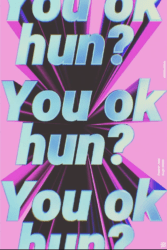
Our coming out stories range from the heartbreaking to the terrifying, from the joyous to, often, hilarious. But whatever else they are, to each one of us, they are a badge of honour because they are uniquely ours, and together, they comprise a shared experience exclusive to the LGBTQIA+ community.
My coming out story certainly isn’t a best-seller – I did it in a restaurant with my parents. Strangely, I had met the waiter the night before on a dance floor in Soho, so I took that as a sign. I knew I was ready, but I was still terrified.
My mum cried (a lot) but was ultimately happy for me. My dad was supportive but found it hard to talk to me for a while. My friends were great, truly great, but their experience of the gay community was limited, so I went on a journey to find some answers that might help me navigate this new life for myself. I became very good at going to clubs on my own and making friends with people. It was exciting, and it was scary.
Around this time, I discovered another thing that was to become a huge part of my identity: Motion Design.
I studied photography at university and spent my days taking pictures. Running parallel with this, I was also dabbling in graphic design, animation, and filmmaking, all of which soon eclipsed my photography work.
I found myself a cracked copy of After Effects and by the time I graduated, I had purchased a copy of “After Effects Classroom in a Book” and clumsily taught myself. I found so much excitement in the seemingly endless possibilities it offered.

Many of my friends were musicians, so, inspired by the likes of Michel Gondry and Chris Cunningham, I made their music videos, terrible music videos. Looking back now, I see them for what they were, though, vehicles for experimentation and learning.
I fell in love with the process and, ultimately, the joy of being able to make something from nothing. As I experienced it, Motion Design offered a complete and wholly satisfying creative experience; it was the perfect marriage of multiple disciplines; graphic design, photography, VFX, music, animation, and compositing. I was in love. I knew it was what I had to do.
Since then, I haven’t looked back, and for the most part, I’ve enjoyed a fun and rewarding career in Motion Design, working alongside some truly wonderful people and friends. I say “for the most part” because it hasn’t always been smooth sailing…
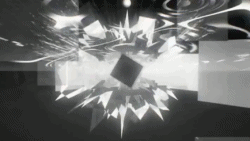
Perhaps surprisingly, the world of Motion Design and postproduction in London isn’t as queer as one might expect. For my whole career, I’ve found myself being painfully aware of my otherness and often felt the need to edit myself or tread carefully regarding my queer identity. As members of the queer community, every new workplace is a new coming out experience, and it carries the same range of emotions as it did the first time around.
Will this new team accept me? Will I be judged? Will I be valued in the same way? Will I be included?
I’ve had full-time roles in three companies now, and sadly in all three, I have encountered homophobia at varying levels. It was at one of these companies – a large and reputable advertising agency in London – I frequently faced homophobic bullying. It was so prevalent that it still shocks me to think about it; even so, I kept the experience quiet for a long time. It began on my first day on the job, and it broke my heart to have what should have been a huge opportunity for me ruined by such toxic behaviour. It set the tone for a miserable and challenging experience, although, thankfully, it wasn’t long before I got out of there.
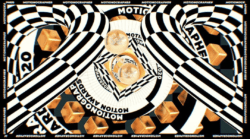
By now, I was 29 years old, and I vowed never to feel apologetic for being a gay man again. I would do everything I could to try and change the narrative that existed in so many workplaces: A boys’ club where the straight white man’s experience is the dominant force.
During that time, I was forming new and strong friendships in a vibrant queer community outside of work, and it strengthened my sense of identity. I was growing in both confidence and creativity.
And then, during a fairly brief period of freelancing and rebuilding, I was approached by Coffee and TV, a brand new and exciting content studio set up by some friends in the industry who rejected some of the tropes of the larger companies I had previously encountered. The sense of love, pride, and dedication amongst the tiny team were palpable. I became one half of a Motion Design team of two, and there was (and still is) an amazing energy here. Yes, I was still the only gay, and there could easily have been faint traces of the familiar narrative that ran so deep within the industry, but by encouraging me to speak my mind, we’re able to correct any negative behaviour before it takes root. I can now say that I have truly helped build a workplace that I never imagined could exist.
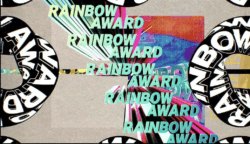
I think joining at such an early and critical stage helped me feel genuinely valued for who I was, as well as being recognised for my talent. I felt seen and accepted, surrounded by allies, and crucially, I felt no need to edit myself.
Since then, I have had a hand in growing a brilliant motion graphics team from the ground up, and it’s a team we feel immensely proud of.
I believe it’s a crime to create a workplace or studio environment where people feel the need to edit themselves based on their race, sexual orientation, gender, or background. Creativity is so deeply rooted in authenticity, and so to deny someone their truth is to deny them their creativity. All our stories are vital, and we must do our best to keep our reference pool as diverse and as vibrant as possible by drawing upon as many experiences as we can. To draw inspiration from one dominant viewpoint or source is completely counterproductive and limiting.
Throughout my career, the world of Motion Design has evolved dramatically. The range of work and talent is just incredible. The tools continue to improve and diversify, and with it, the scope of what is possible keeps on broadening. Platforms like Motionographer are not only sources of inspiration and news, but living proof of how inclusive, vibrant and talented the Motion Design community is.
I was recently offered the chance to design some graphics for The Motion Awards Live. I was so excited when I saw that part of the brief covered The Rainbow Award, an award given exclusively to work representing the LGBTQIA+ community, a true testament to how far we’ve come.
I’m still just as in love with Motion Design as I was when I first discovered it, arguably more so. I found it, or perhaps I should say “it found me” at a crucial point in my life, and it’s been with me ever since. I can only hope that LGBTQIA+ representation in Motion Design continues to grow and that the narrative of studios and workplaces continues to be one of inclusivity and acceptance. We owe it to ourselves, the LGBTQIA+ community, and the future of Motion Design to exist and, ultimately, to create unedited.
About the author:
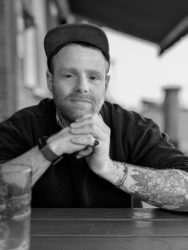
Ed Kevill-Davies
Senior Motion Graphics Designer at Coffee and TV
Ed Kevill-Davies is a gifted Graphic Designer, Art Director, Motion Designer, and Animation Director. As Senior Motion Designer at Coffee & TV, Ed oversees the creation and delivery of many of the department’s projects and nurtures the talent within the burgeoning team.
He has an exceptionally keen eye for graphic design and his signature style often takes inspiration from varying forms of typography and its application. Ed has directed a range of projects for brands and broadcasters including Tetley, Eurotunnel, NBC, Universal, and The BBC.






